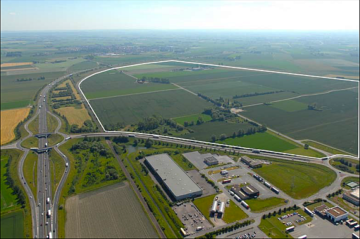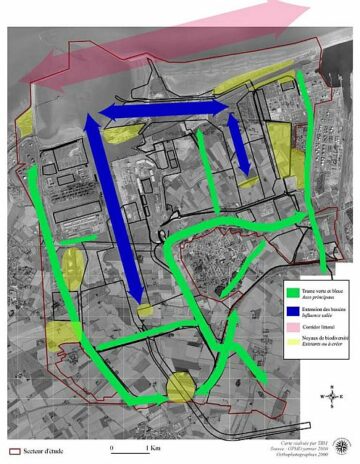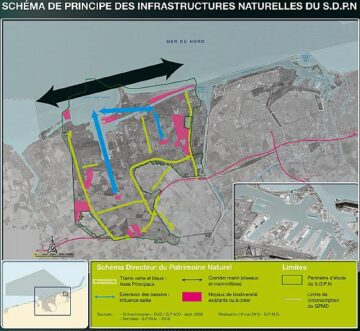Challenge(s)
How can port authorities preserve marine and terrestrial biodiversity in the port city interface areas ?
Good practice
Implement biodiversity conservation plans in port areas
Natural landscapes in port cities have been gradually artificialised for various reasons. Besides their conventional role as port developers, port authorities also bear a significant responsibility to protect the biodiversity in their sites. Port of Dunkirk has already, for 10 years, organised a conservation project to preserve its surrounding 1290 ha by managing the different plant species and looking out for local animal species. This is an example of leadership in biodiversity protection, as they have already published a Natural Heritage Master Plan addressing this issue in 2011.
Case study
In 2011, the Port of Dunkirk published a Natural Heritage Master Plan, which followed the conclusions drawn from the survey of local biodiversity. This guidance document is now considered a benchmark model for treating natural environments in redevelopment projects for a vast port area (17 km of coastline and 7000 hectares). The plan was built around biodiversity hubs, consisting of zones of particular importance to be conserved and deteriorated environments to be restored. Eco-corridors, later on called “green and blue belts”, were used to create a network between these different zones and the broader region.
Dunkerque-Port is fully committed to preserving and managing 1,290 hectares of land dedicated to biodiversity conservation as part of its extensive long-term development program. This commitment represented 43% of the 3,000 hectares available for development, with a financial investment totalling 9.7 million euros, disbursed over 30 years. The conservation efforts focus on two primary priorities: preserving natural environments and restoring and enhancing biodiversity. Each type of environment, including sanctuaries, core areas, corridors, and networks, will have a dedicated management plan. Additionally, an annual eco-balance will be conducted at the Port Ouest level. The Port’s actions will be carried out in a phased approach.
In 2009, Dunkerque-Port initiated experiments before drafting its implemented policies for biodiversity conservation. These experiments took place in the Clipon dunes, demonstrating the feasibility and efficacy of recreating wet dune depressions, which led to the colonisation of these areas by Gnaphale jaunâtre and Sagine noueuse, as well as the reproduction of the Crapaud calamite in two of them. As part of the gradual implementation of major development projects, Dunkerque-Port was planning a series of flagship initiatives, focusing on specific species (e.g., Little Tern, Amphibians, Marine Mammals, notable plants) or environmental aspects (e.g., dike renaturation, agri-environmental measures). These flagship initiatives were implemented in the Natural Heritage Master Plan.
Within the Sustainable Development and Natural Heritage (SDPN) program framework, Dunkerque-Port committed to regularly updating inventories for West Port. Moreover, ongoing inventories and monitoring will be conducted as part of the management plans. Since March 2011, the inventory expansion has covered a wider area, and all collected data have been organised in a comprehensive database.
In 2016, after 5 years of implementation, many actions for biodiversity in port areas and 20% of the Natural Heritage Master Plan were achieved. These data also contributed to an eco-report published at the end of 2017 that allowed us to monitor the trends in biodiversity over the last few years regarding the Port of Dunkirk development.
Additional information
Port of Dunkirk – Environmental commitment
Conserve biodiversity: on the Dunkirk port territory (pdf)



